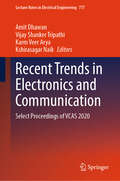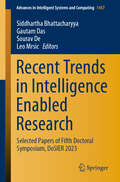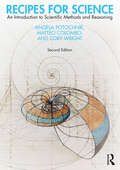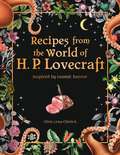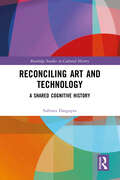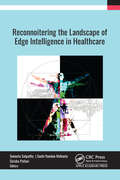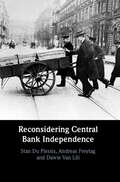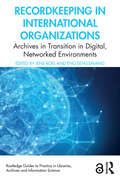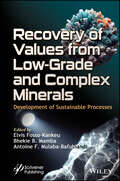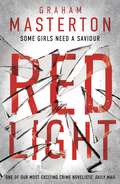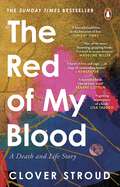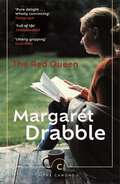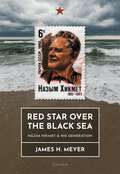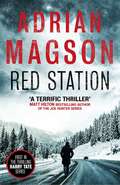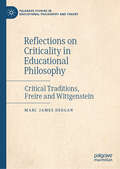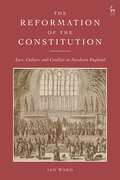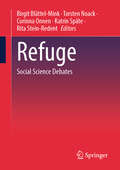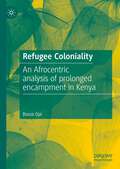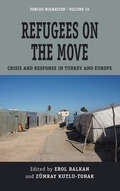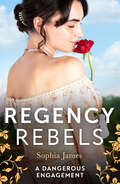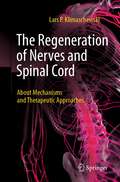- Table View
- List View
Recent Trends in Electronics and Communication: Select Proceedings of VCAS 2020 (Lecture Notes in Electrical Engineering #777)
by Amit Dhawan Vijay Shanker Tripathi Karm Veer Arya Kshirasagar NaikThis book comprises select proceedings of the International Conference on VLSI, Communication and Signal processing (VCAS 2020). The contents are broadly divided into three topics – VLSI, Communication, and Signal Processing. The book focuses on the latest innovations, trends, and challenges encountered in the different areas of electronics and communication, especially in the area of microelectronics and VLSI design, communication systems and networks, and image and signal processing. It also offers potential solutions and provides an insight into various emerging areas such as Internet of Things (IoT), System on a Chip (SoC), Sensor Networks, underwater and underground communication networks etc. This book will be useful for academicians and professionals alike.
Recent Trends in Intelligence Enabled Research: Selected Papers of Fifth Doctoral Symposium, DoSIER 2023 (Advances in Intelligent Systems and Computing #1457)
by Siddhartha Bhattacharyya Gautam Das Sourav De Leo MrsicThis book gathers extended versions of papers presented at DoSIER 2023 (Fifth Doctoral Symposium on Intelligence Enabled Research, held at Cooch Behar Government Engineering College, West Bengal, India, during December 20–21, 2023). The papers address the rapidly expanding research area of computational intelligence, which, no longer limited to specific computational fields, has since made inroads in signal processing, smart manufacturing, predictive control, robot navigation, smart cities, and sensor design, to name but a few. Presenting chapters written by experts active in these areas, the book offers a valuable reference guide for researchers and industrial practitioners alike and inspires future studies.
Recipes for Science: An Introduction to Scientific Methods and Reasoning
by Angela Potochnik Matteo Colombo Cory WrightScientific literacy is an essential aspect of any undergraduate education. Recipes for Science responds to this need by providing an accessible introduction to the nature of science and scientific methods appropriate for any beginning college student. The book is adaptable to a wide variety of different courses, such as introductions to scientific reasoning, methods courses in scientific disciplines, science education, and philosophy of science.Special features of Recipes for Science include contemporary and historical case studies from many fields of physical, life, and social sciences; visual aids to clarify and illustrate ideas; text boxes to explore related topics; plenty of exercises to support student recall and application of concepts; suggestions for further readings at the end of each chapter; a glossary with helpful definitions of key terms; and a companion website with course syllabi, internet resources, PowerPoint presentations, lecture notes, additional exercises, and original short videos on key topics.Key Updates to the Second Edition 13 short chapters of uniform length that make it easier to adapt to a college semester Case studies and examples featuring new research and important historical research across many fields of science Added discussion of timely topics, including large research collaborations, trust and distrust of science, machine learning and other technology-driven advances, diversity in science, and connections to indigenous knowledge Streamlined and simplified discussion of some topics, such as experimentation and statistical hypothesis-testing Exercises that are clearly aligned with learning goals and sorted into types: Recall, Apply, and Think Additional online exercises and a series of original videos on key topics Exercise solutions available on an instructor-only section of the website
Recipes for Science: An Introduction to Scientific Methods and Reasoning
by Angela Potochnik Matteo Colombo Cory WrightScientific literacy is an essential aspect of any undergraduate education. Recipes for Science responds to this need by providing an accessible introduction to the nature of science and scientific methods appropriate for any beginning college student. The book is adaptable to a wide variety of different courses, such as introductions to scientific reasoning, methods courses in scientific disciplines, science education, and philosophy of science.Special features of Recipes for Science include contemporary and historical case studies from many fields of physical, life, and social sciences; visual aids to clarify and illustrate ideas; text boxes to explore related topics; plenty of exercises to support student recall and application of concepts; suggestions for further readings at the end of each chapter; a glossary with helpful definitions of key terms; and a companion website with course syllabi, internet resources, PowerPoint presentations, lecture notes, additional exercises, and original short videos on key topics.Key Updates to the Second Edition 13 short chapters of uniform length that make it easier to adapt to a college semester Case studies and examples featuring new research and important historical research across many fields of science Added discussion of timely topics, including large research collaborations, trust and distrust of science, machine learning and other technology-driven advances, diversity in science, and connections to indigenous knowledge Streamlined and simplified discussion of some topics, such as experimentation and statistical hypothesis-testing Exercises that are clearly aligned with learning goals and sorted into types: Recall, Apply, and Think Additional online exercises and a series of original videos on key topics Exercise solutions available on an instructor-only section of the website
Recipes from the World of H.P Lovecraft: Recipes inspired by cosmic horror
by Olivia Luna EldritchImmerse yourself in the black seas of infinity that is Lovecraft's World like never before with these diverse cuisines inspired by its places, characters and a pantheon of alien deities.The H.P. Lovecraft Cookbook is bursting with photos of many of the recipes, along with extraordinary illustrations and extracts from the original tales. This book offers something for everyone: featuring easy to prepare vegan, vegetarian and seafood dishes, that are delicious enough to wake the tentacled Elder God Cthulhu from his slumber with ingredients readily found on our world.So go ahead, journey through Arkham all the way to R'lyeh while you prepare a banquet fit for the Ancient Ones with recipes that capture the piquancy of Lovecraft's most vivid tales.
Reconciling Art and Technology: A Shared Cognitive History (Routledge Studies in Cultural History)
by Subrata DasguptaThis book examines two venerable cultures, art and technology, and uses the young "interdiscipline" of cognitive history combined with case studies of both ancient and modern artifacts to explore, and unveil, some of the bridges by which this reconciliation of two seemingly distant and oppositional cultures can be effected.Art and technology are commonly regarded as oppositional. While both are concerned with made things – artifacts – and both have their origins in pre-literate antiquity, the primary purposes they are intended for are quite distinct: the artifacts of technology serve utilitarian purposes while those of art serve affective needs. This opposition between art and technology, notably argued by such scholars as Lewis Mumford and George Kubler is challenged in this book. For, when we consider art and technology as creative phenomena, then many significant, interesting, and often subtle commonalities emerge whereby a reconciliation – a unity – of these two great cultures seems possible. This book utilizes case studies of both ancient and modern artifacts – ranging from the Nataraja sculpture of ancient India, a great astronomical clock of ancient China, and Japanese Samurai swordmaking, through Gothic cathedrals and Renaissance paintings of Europe to English Elizabethan machinery to the French Impressionists to modernist concrete structures and paintings in both East and West.This book will be of interest to students and professional scholars interested in the histories of art and technology, cultural history, and creativity studies.
Reconciling Art and Technology: A Shared Cognitive History (Routledge Studies in Cultural History)
by Subrata DasguptaThis book examines two venerable cultures, art and technology, and uses the young "interdiscipline" of cognitive history combined with case studies of both ancient and modern artifacts to explore, and unveil, some of the bridges by which this reconciliation of two seemingly distant and oppositional cultures can be effected.Art and technology are commonly regarded as oppositional. While both are concerned with made things – artifacts – and both have their origins in pre-literate antiquity, the primary purposes they are intended for are quite distinct: the artifacts of technology serve utilitarian purposes while those of art serve affective needs. This opposition between art and technology, notably argued by such scholars as Lewis Mumford and George Kubler is challenged in this book. For, when we consider art and technology as creative phenomena, then many significant, interesting, and often subtle commonalities emerge whereby a reconciliation – a unity – of these two great cultures seems possible. This book utilizes case studies of both ancient and modern artifacts – ranging from the Nataraja sculpture of ancient India, a great astronomical clock of ancient China, and Japanese Samurai swordmaking, through Gothic cathedrals and Renaissance paintings of Europe to English Elizabethan machinery to the French Impressionists to modernist concrete structures and paintings in both East and West.This book will be of interest to students and professional scholars interested in the histories of art and technology, cultural history, and creativity studies.
Reconnoitering the Landscape of Edge Intelligence in Healthcare
by Suneeta Satpathy Sachi Nandan Mohanty Sirisha PotluriThe revolution in healthcare as well as demand for efficient real-time healthcare services are driving the progression of edge computing, AI-mediated techniques, deep learning, and IoT applications for healthcare industries and cloud computing. Edge computing helps to meet the demand for newer and more sophisticated healthcare systems that are more personalized and that match the speed of modern life. With applications of edge computing, automated intelligence and intuitions are incorporated into existing healthcare analysis tools for identifying, forecasting, and preventing high-risk diseases.Reconnoitering the Landscape of Edge Intelligence in Healthcare provides comprehensive research on edge intelligence technology with the emphasis on application in the healthcare industry. It covers all the various areas of edge intelligence for data analysis in healthcare, looking at the emerging technologies such as AI-based techniques, machine learning, IoT, cloud computing, and deep learning with illustrations of the design, implementation, and management of smart and intelligent healthcare systems.Chapters showcase the advantages and highlights of the adoption of the intelligent edge models toward smart healthcare infrastructure. The book also addresses the increased need for a high level of medical data security while transferring real-time data to cloud-based architecture, a matter of prime concern for both patient and doctor. Topics include edge intelligence for wearable sensor technologies and their applications for health monitoring, the various edge computing techniques for disease prediction, e-health services and e-security solutions through IoT devices that aim to improve the quality of care for transgender patients, smart technology in ambient assisted living, the role of edge intelligence in limiting virus spread during pandemics, neuroscience in decoding and analysis of visual perception from the neural patterns and visual image reconstruction, and more.The technology addressed include energy aware cross-layer routing protocol (ECRP), OMKELM-IDS technique, graphical user interface (GUI), IOST (an ultra-fast, decentralized blockchain platform), etc.This volume will be helpful to engineering students, research scholars, and manufacturing industry professionals in the fields of engineering applications initiatives on AI, machine learning, and deep learning techniques for edge computing.
Reconnoitering the Landscape of Edge Intelligence in Healthcare
The revolution in healthcare as well as demand for efficient real-time healthcare services are driving the progression of edge computing, AI-mediated techniques, deep learning, and IoT applications for healthcare industries and cloud computing. Edge computing helps to meet the demand for newer and more sophisticated healthcare systems that are more personalized and that match the speed of modern life. With applications of edge computing, automated intelligence and intuitions are incorporated into existing healthcare analysis tools for identifying, forecasting, and preventing high-risk diseases.Reconnoitering the Landscape of Edge Intelligence in Healthcare provides comprehensive research on edge intelligence technology with the emphasis on application in the healthcare industry. It covers all the various areas of edge intelligence for data analysis in healthcare, looking at the emerging technologies such as AI-based techniques, machine learning, IoT, cloud computing, and deep learning with illustrations of the design, implementation, and management of smart and intelligent healthcare systems.Chapters showcase the advantages and highlights of the adoption of the intelligent edge models toward smart healthcare infrastructure. The book also addresses the increased need for a high level of medical data security while transferring real-time data to cloud-based architecture, a matter of prime concern for both patient and doctor. Topics include edge intelligence for wearable sensor technologies and their applications for health monitoring, the various edge computing techniques for disease prediction, e-health services and e-security solutions through IoT devices that aim to improve the quality of care for transgender patients, smart technology in ambient assisted living, the role of edge intelligence in limiting virus spread during pandemics, neuroscience in decoding and analysis of visual perception from the neural patterns and visual image reconstruction, and more.The technology addressed include energy aware cross-layer routing protocol (ECRP), OMKELM-IDS technique, graphical user interface (GUI), IOST (an ultra-fast, decentralized blockchain platform), etc.This volume will be helpful to engineering students, research scholars, and manufacturing industry professionals in the fields of engineering applications initiatives on AI, machine learning, and deep learning techniques for edge computing.
Reconsidering Central Bank Independence
by null Stan Du Plessis null Andreas Freytag null Dawie van LillCentral bank independence has become one of the most widely accepted tenets of modern monetary policy. According to this view, the main role of independent central banks is to maintain price stability through the adjustment of short-term interest rates. Reconsidering Central Bank Independence argues that the global financial crisis has undermined confidence in this view as central banks increasingly have to address concerns other than price stability, such as financial stability, the need for output recovery and other broader policy goals. Large balance-sheet expansion by central banks followed the global financial crisis, which overlapped considerably with the financial policy of their respective governments. Exploring the consequences of this shift to a more diverse set of policy challenges, this book calls for a return to the consensus role for central banks and analyses what this might mean for their future independence.
Recordkeeping in International Organizations: Archives in Transition in Digital, Networked Environments (Routledge Guides to Practice in Libraries, Archives and Information Science)
by Jens Boel Eng SengsavangRecordkeeping in International Organizations offers an important treatment of international organizations from a recordkeeping perspective, while also illustrating how recordkeeping can play a vital role in our efforts to improve global social conditions.Demonstrating that organizations have both a responsibility and an incentive to effectively manage their records in order to make informed decisions, remain accountable to stakeholders, and preserve institutional history, the book offers practical insights and critical reflections on the effective management, protection, and archiving of records. Through policy advice, surveys, mind mapping, case studies, and strategic reflections, the book provides guidance in the areas of archives, records, and information management for the future. Among the topics addressed are educational requirements for recordkeeping professionals, communication policies, data protection and privacy, cloud computing, classification and declassification policies, artificial intelligence, risk management, enterprise architecture, and the concepts of extraterritoriality and inviolability of archives. The book also offers perspectives on how digital recordkeeping can support the UN’s 2030 Agenda for Sustainable Development, and the accompanying Sustainable Development Goals (SDGs).Recordkeeping in International Organizations will be essential reading for records and archives professionals, information technology, legal, security, management, and leadership staff, including chief information officers. The book should also be of interest to students and scholars engaged in the study of records, archives, and information management, information technology, information security, and law.Chapters 7 and 9 of this book are freely available as a downloadable Open Access PDF at http://www.taylorfrancis.com under a Attribution-NonCommercial-ShareAlike (CC-BY-NC-SA) 4.0 license
Recovery of Values from Low-Grade and Complex Minerals: Development of Sustainable Processes
by Elvis Fosso-Kankeu Bhekie B. Mamba Antoine F. Mulaba-BafubiandiRecovery of Values from Low-Grade and Complex Minerals The book elaborates on various physicochemical properties of minerals and technological developments to improve the recovery of metals while ensuring cost-effectiveness and minimal environmental impact. The mineral industry is undergoing significant cultural, organizational, and technological transformations to address some of the major limitations and challenges related to the environmental and productivity domains. As far as productivity is concerned, the decrease of high-grade ores has been one of the stumbling blocks toward the achievement of maximum recovery of metals while, on the other hand, the complexity of minerals therein makes it difficult to profitably extract metals using only conventional methods. This book presents eight specialized chapters that focus on the exploration of the complexity of minerals that are likely to negatively influence the recovery of values, as well as the development of adequate technologies capable of improving the process of mineral concentration and/or metal recovery from complex minerals in a sustainable manner. It reviews the various physicochemical properties of minerals that are likely to pose a challenge during the attempt to recover values using conventional methods. It also elaborates on the recent technological development that has been considered by researchers to improve the recovery of metals from gangue-dominated minerals while ensuring cost-effectiveness and minimal adverse environmental impact. Audience This book will be of interest to academic researchers from the fields of mineral processing, hydrometallurgy, geochemistry, environment, chemistry, engineering, and professionals including mining plant operators, environmental managers in the industries, government regulatory bodies officers, and environmentalists.
Red Light (Katie Maguire #3)
by Graham MastertonSomewhere in the city of Cork, a woman's cry echoes through the rainy streets. On a bloodstained mattress in a grimy flat, a burly man lies dead. A terrified girl kneels over his body. She has been trapped here for three days. It doesn't take DS Katie Maguire long to identify the murder victim: he's a cruel and powerful pimp she's been trying to convict for years. It's Katie's job to catch the killer. But with men like this dead, the city is safer – and so are the frightened young women who are trafficked into Cork. When a second pimp is horrifically murdered, Katie must decide. Should she do her job, or follow her conscience? Should she allow the killer to strike again?
The Red of my Blood: A Death and Life Story
by Clover StroudTHE INSTANT SUNDAY TIMES BESTSELLER'With brutal, beautiful honesty, Clover articulates how bereavement shocks and dislocates - and in all the pain, there's SO much life.' MARIAN KEYES'MUST READ ... A remarkable acount of love and grief.' - DAILY MAIL'She is a vigorous and fearless writer, grabbing us by the throat to describe life's horrors and her responses to them, filling her pages with the magnetic force of her own life as wife, lover and mother of five which somehow has to go on.' SPECTATOR...............................................'Can death bring something good to my life?'A few weeks before Christmas, Clover's sister died of breast cancer, aged forty-six. Just days before, she had been given years to live. Her sudden death split Clover's life apart. The Red of My Blood charts Clover's fearless passage through the first year after her sister's death.It is a book about what life feels like when death interrupts it, and about bearing the unbearable and describing an experience that seems beyond words. Lyrical, hopeful, it is also about the magical way in which death and life exist so vividly beside one another, and the wonder of being human.'A beautiful addition to the literature of loss. It will serve as a lit match, to be passed from one person to the next in the darkest moments.' THE SUNDAY TIMESCLOVER STROUD'S NEW BOOK, THE GIANT ON THE SKYLINE: ON HOME, BELONGING AND LEARNING TO LET GO, IS OUT ON 9 MAY
The Red Queen (Canons)
by Margaret DrabbleThe princess is taking her over, bodily and mentally. Dr Babs Halliwell is no longer herself. A young girl is plucked from obscurity to marry the Crown Prince of Korea. In her diaries, she chronicles the intrigues of courtly life and her own extraordinary existence. Two hundred years later, the Red Queen's ghost haunts Dr Babs Halliwell, an Oxford academic obsessed with her memoirs and possessed by the many parallels with her own complicated past. But why and how does she keep the Red Queen's story alive? The inimitable Margaret Drabble offers a rich and atmospheric historical novel, where the dead wander among the living and ask what it means to be remembered.
Red Star over the Black Sea: Nâzım Hikmet and his Generation
by James H. MeyerNâzım Hikmet (1902-1963) is best known as a poet and communist whose daring flight by motorboat from Turkey to the Eastern Bloc captured international headlines in 1951. One of the most important poets to have written in the Turkish language, Nâzım Hikmet's dramatic life story is fascinating in its own right, but also intersects with the story of the broader twentieth century. James H. Meyer situates Nâzım Hikmet within the broader context of Turkish communist "border-crossers," individuals whose lives would go on to be shaped significantly by their ability, inability, or need to traverse the frontier. Born at the turn of the twentieth century and coming of age in the early 1920s, the women and men from Nâzım Hikmet's generation were the last of the Ottomans. Children of empire, they had grown up in an era of porous frontiers, but by the time they reached their third decade, these borders had begun to close. Drawing upon an enormous amount of previously untapped archival materials and personal papers from Moscow, Istanbul, Amsterdam, and Washington, DC, Meyer has written a biography of Nâzım Hikmet unlike any other. A book of world history wrapped inside a life story, Red Star over the Black Sea shows how changing attitudes toward borders and the people who cross them impacted a late imperial generation all the way up to the final years of the Cold War.
Red Station (Harry Tate thrillers #1)
by Adrian MagsonFour washed-up spooks. Two dead civilians. One remote and deadly outpost. Harry Tate is a loyal MI5 officer and a servant of the State. But when two civilians are shot dead during a drugs intercept gone wrong, he is forced to take an immediate posting to the Red Station. What he doesn’t know is that this remote Balkan outpost is a punishment and he won’t be going home. With an assassination team coming for him and invading Russian forces heading straight for the Red Station, Harry does whatever he can to save himself. But with few allies and enemies everywhere, Harry’s chances of survival shrink with each passing day . . .
Reflections on Criticality in Educational Philosophy: Critical Traditions, Freire and Wittgenstein (Palgrave Studies in Educational Philosophy and Theory)
by Marc James DeeganThis book navigates global educational policy concerning critical thinking skills and competencies. The author explores the concept of criticality from the perspectives of several critical traditions, and draws on the works of Paulo Freire and Ludwig Wittgenstein. The diverse and intricate ideas, methods and ways of thinking that emerge are examined in the new perspectival space of ‘criticality scholarship’. Pursuing his own political and philosophical aspirations, the author endeavours to link a critical education with the promotion of democracy and social justice. Opportunities for further empirical and theoretical research are signposted. The book will be of interest to scholars in educational philosophy.
The Reformation of the Constitution: Law, Culture and Conflict in Jacobean England
by Professor Ian WardThis book revisits one of the defining judicial engagements in English legal history. It provides a fresh account of the years 1606 to 1616 which witnessed a series of increasingly volatile confrontations between, on the one side, King James I and his Attorney-General, Sir Francis Bacon, and on the other, Sir Edward Coke, successively Chief Justice of Common Pleas and Lord Chief Justice. At the heart of the dispute were differing opinions regarding the nature of kingship and the reach of prerogative in reformation England. Appreciating the longer context, in the summer of 1616 King James appealed for a reformation of law and constitution to complement the reformation of his Church. Later historians would discern in these debates the seeding of a century of revolution, followed by another four centuries of reform. This book ventures the further thought that the arguments which echoed around Westminster Hall in the first years of the seventeenth century have lost little of their resonance half a millennium on. Breaks with Rome are little easier to 'get done', the margins of executive governance little easier to draw.
The Reformation of the Constitution: Law, Culture and Conflict in Jacobean England
by Professor Ian WardThis book revisits one of the defining judicial engagements in English legal history. It provides a fresh account of the years 1606 to 1616 which witnessed a series of increasingly volatile confrontations between, on the one side, King James I and his Attorney-General, Sir Francis Bacon, and on the other, Sir Edward Coke, successively Chief Justice of Common Pleas and Lord Chief Justice. At the heart of the dispute were differing opinions regarding the nature of kingship and the reach of prerogative in reformation England. Appreciating the longer context, in the summer of 1616 King James appealed for a reformation of law and constitution to complement the reformation of his Church. Later historians would discern in these debates the seeding of a century of revolution, followed by another four centuries of reform. This book ventures the further thought that the arguments which echoed around Westminster Hall in the first years of the seventeenth century have lost little of their resonance half a millennium on. Breaks with Rome are little easier to 'get done', the margins of executive governance little easier to draw.
Refuge: Social Science Debates
by Birgit Blättel-Mink Torsten Noack Corinna Onnen Katrin Späte Rita Stein-RedentThe welcome culture of 2015 in Germany has, not least due to the (re)definition of safe countries of origin, turned into a deportation policy. How can this change in policy be understood and is it also accompanied by a change of attitude among the population? Which reasons for and which reasons against the admission of refugees are cited in social debates? This volume brings together analyses of the social discourse on dealing with refugees, questions of labour market integration and the practice of counselling refugees. Alongside academic analyses are reflective contributions from the practice of migration policy.With contributions by Olaf Struck.- David Stiller.- Helge Döring and Sebastian Kurtenbach.- Ann-Christine Lill, Janis Schneider and Sam Schneider.- Kirsten Hoesch. - Kathrin Weis.- Theresa Köhler and Kerstin Ettl.- Doris Beer.- André Pohlmann.- Katharina Resch, Gertraud Kremsner, Michelle Proyer, Camilla Pellech, Regina Studener-Kuras and Gottfried Biewe.The editors: Prof. Dr. Birgit Blättel-Mink is Professor of Sociology with a focus on industrial and organizational sociology at the Goethe University in Frankfurt/Main. Torsten Noack, M.A. Sociology, Head of the School for Work Education of the International Federation Stuttgart. Prof. Dr. Corinna Onnen is university professor for general sociology at the University of Vechta. Dr. Katrin Späte works at the Institute for Sociology at the University of Münster. Apl. Prof. Dr. Rita Stein-Redent works at the University of Vechta.
Refugees on the Move: Crisis and Response in Turkey and Europe (Forced Migration #45)
by Erol Balkan Zümray Kutlu TonakRefugees on the Move highlights and explores the profound complexities of the current refugee issue by focusing specifically on Syrian refugees in Turkey and other European countries and responses from the host countries involved. It examines the causes of the movement of refugee populations, the difficulties they face during their journeys, the daily challenges and obstacles they experience, and host governments’ attempts to manage and overcome the so-called “refugee crisis.”
Regency Rebels: Marriage Made In Rebellion (the Penniless Lords) / Marriage Made In Hope (Mills And Boon E-book Collections)
by Sophia JamesLove conquers all
The Regeneration of Nerves and Spinal Cord: About Mechanisms and Therapeutic Approaches
by Lars P. KlimaschewskiThis non-fiction book provides information about the latest findings on research and therapy of nerve regeneration with catchy drawings and in understandable words. Why do nerves in the extremities regenerate, but the axons in the spinal cord do not? Can transplanted stem cells or biopolymers restore regeneration? Are bioprostheses able to functionally replace amputated arms or legs? Neuroscientist Lars Klimaschewski answers these questions and reports on exciting findings from anatomy, cell and molecular biology and neurotechnology. Find out, among other things, how a brain-computer interface processes signals from the brain in order to control the arm or leg muscles again via electrodes after a paraplegia.The translation was done with the help of artificial intelligence. A subsequent human revision was done primarily in terms of content.
